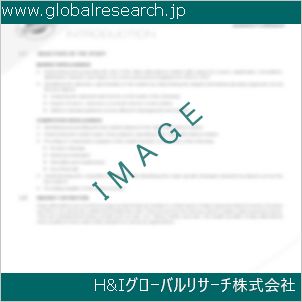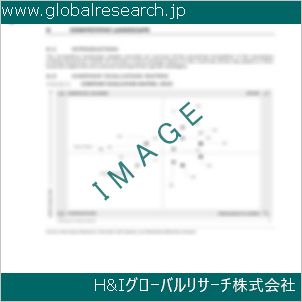Table of Contents
1 Industry Overview of Sodium
1.1 Definition and Specifications of Sodium
1.1.1 Definition of Sodium
1.1.2 Specifications of Sodium
1.2 Classification of Sodium
1.3 Applications of Sodium
1.3.1 Nuclear Application
1.3.2 Non-Nuclear Application
1.4 Industry Chain Structure of Sodium
1.5 Industry Overview and Major Regions Status of Sodium
1.5.1 Industry Overview of Sodium
1.5.2 Global Major Regions Status of Sodium
1.6 Industry Policy Analysis of Sodium
1.7 Industry News Analysis of Sodium
2 Manufacturing Cost Structure Analysis of Sodium
2.1 Raw Material Suppliers and Price Analysis of Sodium
2.2 Equipment Suppliers and Price Analysis of Sodium
2.3 Labor Cost Analysis of Sodium
2.4 Other Costs Analysis of Sodium
2.5 Manufacturing Cost Structure Analysis of Sodium
2.6 Manufacturing Process Analysis of Sodium
3 Technical Data and Manufacturing Plants Analysis of Sodium
3.1 Capacity and Commercial Production Date of Global Sodium Major Manufacturers in 2023
3.2 Manufacturing Plants Distribution of Global Sodium Major Manufacturers in 2023
3.3 R&D Status and Technology Source of Global Sodium Major Manufacturers in 2023
3.4 Raw Materials Sources Analysis of Global Sodium Major Manufacturers in 2023
4 Capacity, Production and Revenue Analysis of Sodium by Regions, Types and Manufacturers
4.1 Global Capacity, Production and Revenue of Sodium by Regions 2019-2024
4.2 Global and Major Regions Capacity, Production, Revenue and Growth Rate of Sodium 2019-2024
4.3 Global Capacity, Production and Revenue of Sodium by Types 2019-2024
4.4 Global Capacity, Production and Revenue of Sodium by Manufacturers 2019-2024
5 Price, Cost, Gross and Gross Margin Analysis of Sodium by Regions, Types and Manufacturers
5.1 Price, Cost, Gross and Gross Margin Analysis of Sodium by Regions 2019-2024
5.2 Price, Cost, Gross and Gross Margin Analysis of Sodium by Types 2019-2024
5.3 Price, Cost, Gross and Gross Margin Analysis of Sodium by Manufacturers 2019-2024
6 Consumption Volume, Consumption Value and Sale Price Analysis of Sodium by Regions, Types and Applications
6.1 Global Consumption Volume and Consumption Value of Sodium by Regions 2019-2024
6.2 Global and Major Regions Consumption Volume, Consumption Value and Growth Rate of Sodium 2019-2024
6.3 Global Consumption Volume and Consumption Value of Sodium by Types 2019-2024
6.4 Global Consumption Volume and Consumption Value of Sodium by Applications 2019-2024
6.5 Sale Price of Sodium by Regions 2019-2024
6.6 Sale Price of Sodium by Types 2019-2024
6.7 Sale Price of Sodium by Applications 2019-2024
6.8 Market Share Analysis of Sodium by Different Sale Price Levels
7 Supply, Import, Export and Consumption Analysis of Sodium
7.1 Supply, Consumption and Gap of Sodium 2019-2024
7.2 Global Capacity, Production, Price, Cost, Revenue, Supply, Import, Export and Consumption of Sodium 2019-2024
7.3 USA Capacity, Production, Price, Cost, Revenue, Supply, Import, Export and Consumption of Sodium 2019-2024
7.4 EU Capacity, Production, Price, Cost, Revenue, Supply, Import, Export and Consumption of Sodium 2019-2024
7.5 China Capacity, Production, Price, Cost, Revenue, Supply, Import, Export and Consumption of Sodium 2019-2024
7.6 Japan Capacity, Production, Price, Cost, Revenue, Supply, Import, Export and Consumption of Sodium 2019-2024
8 Major Manufacturers Analysis of Sodium
8.1 Manufacturer One
8.1.1 Company Profile
8.1.2 Product Picture and Specifications
8.1.2.1 Type I
8.1.2.2 Type II
8.1.2.3 Type III
8.1.3 Capacity, Production, Price, Cost, Gross and Revenue
8.1.4 Contact Information
8.2 Manufacturer Two
8.2.1 Company Profile
8.2.2 Product Picture and Specifications
8.2.2.1 Type I
8.2.2.2 Type II
8.2.2.3 Type III
8.2.3 Capacity, Production, Price, Cost, Gross and Revenue
8.2.4 Contact Information
8.3 Manufacturer Three
8.3.1 Company Profile
8.3.2 Product Picture and Specifications
8.3.2.1 Type I
8.3.2.2 Type II
8.3.2.3 Type III
8.3.3 Capacity, Production, Price, Cost, Gross and Revenue
8.3.4 Contact Information
8.4 Manufacturer Four
8.4.1 Company Profile
8.4.2 Product Picture and Specifications
8.4.2.1 Type I
8.4.2.2 Type II
8.4.2.3 Type III
8.4.3 Capacity, Production, Price, Cost, Gross and Revenue
8.4.4 Contact Information
8.5 Manufacturer Five
8.5.1 Company Profile
8.5.2 Product Picture and Specifications
8.5.2.1 Type I
8.5.2.2 Type II
8.5.2.3 Type III
8.5.3 Capacity, Production, Price, Cost, Gross and Revenue
8.5.4 Contact Information
…
9 Marketing Trader or Distributor Analysis of Sodium
9.1 Marketing Channels Status of Sodium
9.2 Traders or Distributors with Contact Information of Sodium by Regions
9.3 Ex-work Price, Channel Price and End Buyer Price Analysis of Sodium
9.4 Regional Import, Export and Trade Analysis of Sodium
10 Industry Chain Analysis of Sodium
10.1 Upstream Major Raw Materials Suppliers Analysis of Sodium
10.1.1 Major Raw Materials Suppliers with Contact Information Analysis of Sodium
10.1.2 Major Raw Materials Suppliers with Supply Volume Analysis of Sodium by Regions
10.2 Upstream Major Equipment Suppliers Analysis of Sodium
10.2.1 Major Equipment Suppliers with Contact Information Analysis of Sodium
10.2.2 Major Equipment Suppliers with Product Pictures Analysis of Sodium by Regions
10.3 Downstream Major Consumers Analysis of Sodium
10.3.1 Major Consumers with Contact Information Analysis of Sodium
10.3.2 Major Consumers with Consumption Volume Analysis of Sodium by Regions
10.4 Supply Chain Relationship Analysis of Sodium
11 Development Trend of Analysis of Sodium
11.1 Capacity, Production and Revenue Forecast of Sodium by Regions and Types
11.1.1 Global Capacity, Production and Revenue of Sodium by Regions 2024-2029
11.1.2 Global and Major Regions Capacity, Production, Revenue and Growth Rate of Sodium 2024-2029
11.1.3 Global Capacity, Production and Revenue of Sodium by Types 2024-2029
11.2 Consumption Volume and Consumption Value Forecast of Sodium by Regions, Types and Applications
11.2.1 Global Consumption Volume and Consumption Value of Sodium by Regions 2024-2029
11.2.2 Global and Major Regions Consumption Volume, Consumption Value and Growth Rate of Sodium 2024-2029
11.2.3 Global Consumption Volume and Consumption Value of Sodium by Types 2024-2029
11.2.4 Global Consumption Volume and Consumption Value of Sodium by Applications 2024-2029
11.3 Supply, Import, Export and Consumption Forecast of Sodium
11.3.1 Supply, Consumption and Gap of Sodium 2024-2029
11.3.2 Global Capacity, Production, Price, Cost, Revenue, Supply, Import, Export and Consumption of Sodium 2024-2029
11.3.3 USA Capacity, Production, Price, Cost, Revenue, Supply, Import, Export and Consumption of Sodium 2024-2029
11.3.4 EU Capacity, Production, Price, Cost, Revenue, Supply, Import, Export and Consumption of Sodium 2024-2029
11.3.5 China Capacity, Production, Price, Cost, Revenue, Supply, Import, Export and Consumption of Sodium 2024-2029
11.3.6 Japan Capacity, Production, Price, Cost, Revenue, Supply, Import, Export and Consumption of Sodium 2024-2029
12 New Project Investment Feasibility Analysis of Sodium
12.1 New Project SWOT Analysis of Sodium
12.2 New Project Investment Feasibility Analysis of Sodium
13 Conclusion of the Global Sodium (CAS 7440-23-5) Industry 2024 Market Research Report
| ※参考情報 ナトリウム(Sodium、化学記号:Na)は、原子番号11のアルカリ金属元素であり、周期表の1族に位置しています。ナトリウムは、化学的には非常に反応性が高く、特に水と反応することで強い塩基である水酸化ナトリウムと水素ガスを生成します。この性質は、ナトリウムを取り扱う際に注意が必要であることを示しています。常温常圧では銀白色の金属であり、柔らかく、ナイフで簡単に切ることができる特徴があります。 ナトリウムは自然界においては主に塩の形で存在し、海水中の塩分の大部分を占めています。また、土壌や鉱石にも存在し、特にフルオリナイトやナトロライトなどの鉱石として見られます。ナトリウムは、他の元素と結合することで多様な化合物を形成しますが、中でも塩化ナトリウム(NaCl)、すなわち食塩が最もよく知られています。この食塩は、食品の保存や味付けに広く利用され、ナトリウムの最も身近な用途の一つとなっています。 ナトリウムは、いくつかの特性に富んでいるため、さまざまな産業で重要な役割を果たしています。例えば、化学工業においては、ナトリウムは合成反応や還元反応の触媒として使用されることがあります。また、ナトリウムは、ナトリウム蒸気灯やナトリウムベータ酸化物電池などの特殊な用途にも使われています。ナトリウム蒸気灯は、街路灯や工業用照明に使用されるほか、その高効率と長寿命から多くの地域で利用されています。 ナトリウムの化合物の中でも、ナトリウムビスマスルール(NaBiO₃)やナトリウムアセチルサリチル酸(アスピリンの成分)などが医療分野でも重要です。これらの化合物は、医薬品や治療法の開発において不可欠な役割を果たしています。さらに、ナトリウムの化合物は、セラミックスやガラス製品の製造にも利用されており、これらの材料の性能を向上させるために重要です。 ナトリウムはその性質から、特に相互作用が大きい元素と反応しやすく、そのため取り扱いには注意が必要です。酸素や水分と接触すると激しい反応を起こし、火災や爆発の原因となる可能性があります。したがって、ナトリウムを取り扱う際は、適切な安全対策を講じることが求められます。 ナトリウムは、エネルギー技術分野でも注目されています。ナトリウムイオン電池は、リチウムイオン電池の代替技術として研究されており、特にコストや資源供給の観点から注目を集めています。ナトリウムイオン電池は、リチウムに比べて豊富に存在し、リサイクルも容易であるため、持続可能なエネルギーソリューションとして期待されています。これにより、電気自動車や再生可能エネルギーの貯蔵システムに応用可能です。 さらに、ナトリウムは環境技術においても利点があります。ナトリウムを基盤とした触媒を用いた反応は、環境にやさしいプロセスとして認識されています。これにより、化学反応をより効率的に行い、廃棄物の生成を抑えることが可能となります。そのため、ナトリウムの関連技術は、環境問題の解決に寄与する可能性を秘めています。 最後に、ナトリウムの研究は今後も進展していくでしょう。ナトリウムの特性やその化合物の応用に関する新しい発見は、さらに多くの産業に影響を与えると考えられます。化学、医療、エネルギーなどにおけるナトリウムの利用は、私たちの日常生活においても重要な位置を占めており、その適用範囲は今後も広がることが期待されます。ナトリウムは、単なる元素の一つではなく、多様な可能性を秘めた重要な材料として、私たちの未来においても重要な役割を果たすことでしょう。 |
❖ 免責事項 ❖
http://www.globalresearch.jp/disclaimer












